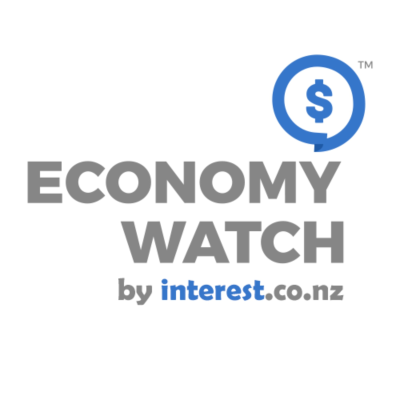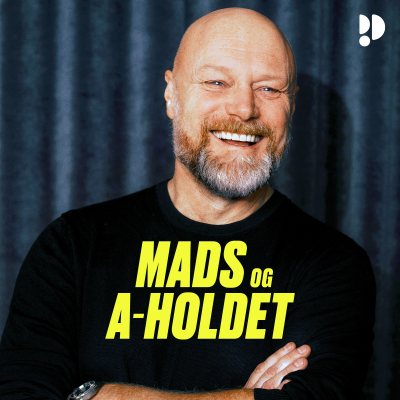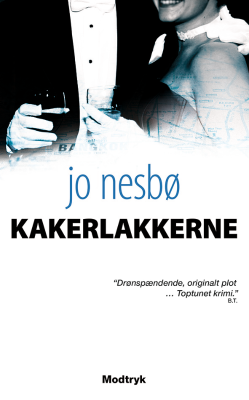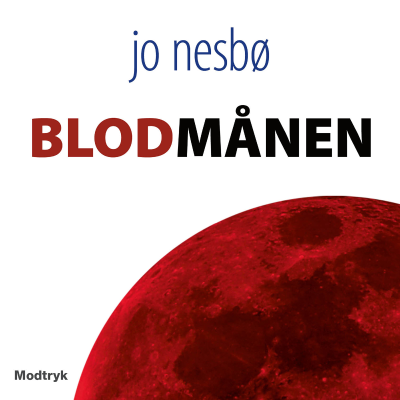
Economy Watch
Podcast af Interest.co.nz / Podcasts NZ, David Chaston, Gareth Vaughan, interest.co.nz
Begrænset tilbud
2 måneder kun 19 kr.
Derefter 99 kr. / månedIngen binding.

Mere end 1 million lyttere
Du vil elske Podimo, og du er ikke alene
Rated 4.7 in the App Store
Læs mere Economy Watch
We follow the economic events and trends that affect New Zealand.
Alle episoder
1632 episoderKia ora, Welcome to Thursday’s Economy Watch where we follow the economic events and trends that affect Aotearoa/New Zealand. I'm David Chaston and this is the international edition from Interest.co.nz. And today we lead with news we need to brace for an end to the US Fed's independence. It may not be at risk right now, but the signs aren't promising. And politicians everywhere will seize on the mood to pull that level, to ease their own policies that don't deliver. The juice of monetary stimulus is just too enticing, the risks be damned. First in the US, investors are expecting Nvidia’s earnings to be reported after the NYSE closing at 8am NZT, seen as a key test for the AI boom driving markets. The S&P 500 and Nasdaq are marginally higher in advance of that, while Nvidia shares are little-changed. But the derivatives market in the stock is set for a -6% swing and if that happens, that will be a -NZ$500 bln fall - probably the biggest movement of any economic metric today anywhere in the world. We will know soon enough. Some think we should also watch the share price in Costco and Walmart. They both have lofty valuations that raise the risk of serious correction. These three are all enormous companies - Nvidia has a market cap of an eye-watering US$4.4 tln, Costco US$420 bln, and Walmart is US$770 bln. In each case that is way more than New Zealand's GDP. Walmart plus Costco is approaching Australia's GDP. Staying in the US there was little data out overnight. The volume of mortgage applications [https://www.mba.org/news-and-research/newsroom/news/2025/08/27/mortgage-applications-decrease-in-latest-mba-weekly-survey] softened by -0.5% last week from the previous week, extending the -1.4% trim from the prior month. Applications to refinance an existing mortgage fell by -3.5% offsetting the +2.2% increase in applications for a mortgage to buy a new home. Separately, American officials are decrying the intelligence efforts by the Chinese Ministry of State Security and their 'Salt Typhoon [https://en.wikipedia.org/wiki/Salt_Typhoon]' operation. But they have been caught [https://www.dr.dk/nyheder/indland/moerklagt] running covert operations in Greenland. The Dames are unimpressed. Trump's America is no-one's friend. Even at home, his militarisation of local policing, grabbing shares in companies without paying, are worrying developments. His efforts to subvert the Fed are just part of an effective quiet rolling coup with a much broader agenda. These are stand-over tactics that will undermine the US reputation for generations. In Taiwan, their industry may be going at full tilt, but consumer sentiment is actually weakening. An August survey [http://rcted.ncu.edu.tw/cci/cci_1140827.pdf] there shows it at its weakest level since April 2023, as five of six key indicators deteriorated. Chinese industrial profits fell [https://www.stats.gov.cn/sj/zxfbhjd/202508/t20250827_1960884.html] again in July, down -1.7% from a year ago in July. They fell -7.5% for SOE's but were up +1.8% for private businesses. Yesterday, there was a big surprise in data released [https://www.abs.gov.au/statistics/economy/price-indexes-and-inflation/monthly-consumer-price-index-indicator/jul-2025] today in Australia on inflation. Their monthly indicator had fallen consistently to 1.9% in June. The RBA was relieved. But the July level came in at 2.8%, an unexpectedly large jump. There will be head-scratching. Higher electricity prices (+13.1%) are getting the blame. The UST 10yr yield is now at 4.24%, down -1 bp from yesterday at this time. Long bond yields, especially the 30 year, are rising more quickly now. The price of gold [http://www.interest.co.nz/charts/commodities/precious-metals] will start today at US$3,395/oz, up +US$14 from yesterday. American oil prices have risen +50 USc to US$64/bbl with the international Brent price now just under US$68/bbl. The Kiwi dollar is at just on 58.6 USc and little-changed from yesterday at this time. Against the Aussie we are down -30 bps at 90.3 AUc. Against the euro we are up +10 bps at 50.4 euro cents. That all means our TWI-5 starts today at just under 66.3, and little-changed from yesterday. The bitcoin price starts today at US$112,400 and up +2.4% from this time yesterday. Volatility over the past 24 hours has been modest at just on +/- 1.2%. You can get more news affecting the economy in New Zealand from interest.co.nz. Kia ora. I'm David Chaston. And we will do this again tomorrow.
Kia ora, Welcome to Wednesday’s Economy Watch where we follow the economic events and trends that affect Aotearoa/New Zealand. I'm David Chaston and this is the international edition from Interest.co.nz. And today we lead with news of mixed and confusing economic signals from the world's largest economy where scoring own-goals is becoming an embedded feature of their economic management. But first, there was an overnight Pulse dairy auction [https://www.globaldairytrade.info/en/gdt-pulse-results/] for both SMP and WMP and that delivered lower prices with the SMP price dropping -2.0% from the prior week's full dairy auction, and the WMP price down -1.1% In the US, financial markets are quite hesitant because Trump is attempting to fire a non-loyal Fed governor for made-up 'integrity' reasons (pot-kettle-black). Because she in Black, and a woman, Trump's vengeance is particularly pointed.in this case and contrasts starkly with how he treats Powell (which is also personal and isn't good either.) She hasn't been charged with anything let alone convicted, and legal action over the Presidential 'letter' will now follow. She is resisting [https://www.bloomberg.com/news/articles/2025-08-26/can-trump-really-fire-fed-governor-lisa-cook-what-the-law-says?srnd=homepage-asia] the bullying. The USD slipped and long dated UST bonds posted losses as market unease spread. Overnight releases of American economic data was quite mixed. First, durable goods orders [https://www.census.gov/manufacturing/m3/adv/pdf/durgd.pdf] fell in July from June, down -2.8% and on top of the -9.4% fall in the June result. That takes the year-on-year July result to just a +3.5% rise, about what current inflation can account for. Non-defense, non-aircraft capital goods orders rose a little more than that, up +4.5% from a year ago, so that was positive. But they fell -8.0% in July from June. The Richmond Fed factory survey [https://www.richmondfed.org/region_communities/regional_data_analysis/surveys/manufacturing] in the mid-Atlantic states remained negative in August, although not as much as the outsized July retreat. Factories in this region have been doing it tough since March 2025. Cost inflation is hitting them hard as a result of having to pay the tariff taxes. The average growth rate of prices paid increased notably, while growth in prices received was nearly unchanged in August. Yesterday we noted the negative Dallas Fed factory survey for Texas. Today the services survey for the same region was released and it reported [https://www.dallasfed.org/research/surveys/tssos/2025/2508] a better expansion. But they reported the improvement as 'slight'. There was also only a slight change in consumer sentiment reported [https://www.conference-board.org/topics/consumer-confidence/] by the Conference Board for August. Rising worries about jobs and income were offset by more optimistic views of current and future business conditions, they said. Overall, consumer confidence dipped slightly in August but remained at a level similar to those of the past three months. Tariff-taxes are a key reason there is no improvement in this survey. Consumers’ average 12-month inflation expectations picked up after three consecutive months of easing and reached 6.2% in August, up from 5.7% in July. Once rare seven-year car loans are fast becoming the norm in the US. They’re often the only way buyers can afford new vehicles, with the average vehicle sale prices surging +28% in five years to approach NZ$85,000. And tariffs will make than much worse. Bloomberg is reporting [https://www.bloomberg.com/news/articles/2025-08-25/surging-car-prices-push-buyers-to-take-out-longer-auto-loans] that in Q2-2025, seven-year vehicle loans represented 21% of all new-vehicle financing. Six-year loans, at one time considered the upper end of the range, are now the most common, accounting for 36%. Some buyers are even now going for eight-year loans. There was a large and well supported two year US Treasury bond auction [https://www.treasurydirect.gov/instit/annceresult/press/preanre/2025/R_20250826_2.pdf] overnight, resulting in a median yield of 3.60%, down from 3.87% at the prior equivalent event [https://www.treasurydirect.gov/instit/annceresult/press/preanre/2025/R_20250728_2.pdf] a month ago. North of the border, Canada released some business activity data for July, and both metrics rose and by more than expected. Their wholesale trade [https://www150.statcan.gc.ca/n1/daily-quotidien/250826/dq250826d-eng.htm] was up +1.3% from +0.7% in June, driven by stronger vehicle sales. They manufacturing sales [https://www150.statcan.gc.ca/n1/daily-quotidien/250826/dq250826c-eng.htm] rose +1.8% in July, an improvement from +0.3% in June. Transportation equipment, and the energy sector, provided the key boosts. Across the Pacific in South Korea, you may recall the huge jump in consumer sentiment in July after the peaceful resolution of the attempted executive coup there earlier in the year. The rule of law won. In August, that confidence level dropped sharply [https://www.bok.or.kr/portal/bbs/B0000501/view.do?nttId=10093149&menuNo=201264&programType=newsData&relate=Y&depth=201264] as things returned to normal. But to be fair is is still far higher than at any time in the past ten years - despite their ugly treatment by the Trump Administration. In Australia, Australia Post has temporarily partially suspended postal services to the US [https://auspost.com.au/business/shipping/parcels-international/international-post-guide/results/united-states#usa-tariff]. All such deliveries now require full customs duties and declarations making the trade impractical for small value items and substantial jeopardy for the shipper. The disruption to such courier services is spreading to most Asian countries now. The UST 10yr yield is now at 4.25%, down -3 bps from yesterday at this time. The price of gold [http://www.interest.co.nz/charts/commodities/precious-metals] will start today at US$3,381/oz, up +US$10 from yesterday. American oil prices have fallen -US$1.50 to US$63.50/bbl with the international Brent price now just under US$67.50/bbl. The Kiwi dollar is at just on 58.6 USc and little-changed from yesterday at this time. Against the Aussie we are up +10 bps at 90.3 AUc. Against the euro we are unchanged at 50.3 euro cents. That all means our TWI-5 starts today at just on 66.3, and also little-changed from yesterday. The bitcoin price starts today at US$109,747 and down another -2.4% from this time yesterday. Volatility over the past 24 hours has been modest at just on +/- 1.5%. You can get more news affecting the economy in New Zealand from interest.co.nz. Kia ora. I'm David Chaston. And we will do this again tomorrow.
Kia ora, Welcome to Tuesday’s Economy Watch where we follow the economic events and trends that affect Aotearoa/New Zealand. I'm David Chaston and this is the international edition from Interest.co.nz. And today we lead with news that while much of the northern hemisphere is enjoying the last of their summer holidays, Chinese investors have returned in a bullish mood, and in contrast to the now-jaded US equity markets. But first in the US, consumer credit bureau VantageScore [https://vantagescore.com/] is reporting that consumers with the best credit scores (superprime) are showing meaningful signs of credit stress. Among this group late payments have more than doubled in a year. For the group below that ('prime') this metric of delinquency rose almost +50%. (VantageScore is a partnership of Equifax, Experian and TransUnion, and competes with the dominant FICO.) Meanwhile, the widely followed Chicago Fed National Activity Index retreated. This tracking [https://www.chicagofed.org/research/data/cfnai/current-data] suggested overall American economic growth decreased in July. The Dalla Fed said [https://www.dallasfed.org/research/surveys/tmos/2025/2508] that in its region factory activity is still expanding but at a slower pace. Although new orders rose (and for the first time in 2025), production activity eased back noticeably. Price and wage pressures rose faster. New house sales [https://www.census.gov/construction/nrs/pdf/newressales.pdf] in the US stayed at an essentially unchanged pace in July, although marginally softer than in June. Prices dipped, likely because they have a continuing glut of new homes for sale, exceeding nine months’ worth at the current sales rate. The latest estimate from the Atlanta Fed's GDPNow live tracking is due tomorrow and is likely to reflect the overall slowdown reported in these other indicators. Across the Pacific, Singapore said [https://www.singstat.gov.sg/-/media/files/news/cpijul25.ashx] it basically doesn't have any inflation. Its July survey came in even lower than was anticipated - even food inflation there is very low. Yesterday, we noticed that the Chinese central bank set its Yuan exchange rate with an outsized shift, now at 7.116 to the USD, a 160 bps strengthening from the prior fix. That makes it its strongest against the greenback since October 2024. It is unclear why this happened because the US dollar index was little-changed in this period. Maybe some of this is related to the recent equities euphoria in the Shanghai stock market - its starting to show the frothy signs that Hong Kong has long displayed. The UST 10yr yield is now at 4.28%, up +2 bps from yesterday at this time. Wall Street has started its week hesitantly, with the S&P500 down -0.3% in Monday trade. Overnight, European markets opened their week mixed with London up +0.1% but Paris down -1.6%. Yesterday Tokyo started its week up +0.4%. Hong King rose a strong +1.9% and Shanghai mirrored that, up +1.5%. Singapore was up a minor +0.1%. That was matched by the ASX200. The NZX50 rose +0.3% in its Monday trade. The price of gold [http://www.interest.co.nz/charts/commodities/precious-metals] will start today at US$3,371/oz, little-changed (+US$1) from yesterday. American oil prices have risen +US$1 to US$65/bbl with the international Brent price now just under US$69/bbl. And we should also note that China has imported no natural gas from the US since March and no crude oil since June. But the US keeps importing from China, despite the border tariff taxes, which the US importers seem to be paying. The Kiwi dollar is at just on 58.6 USc and down -10 bps from yesterday at this time. Against the Aussie we are down -20 bps at 90.2 AUc. Against the euro we are up +20 bps at 50.3 euro cents. That all means our TWI-5 starts today at just under 66.3, little-changed from yesterday. The bitcoin price starts today at US$112,427 and down -1.7% from this time yesterday. Volatility over the past 24 hours has been modest also at just on +/- 1.7%. You can get more news affecting the economy in New Zealand from interest.co.nz. Kia ora. I'm David Chaston. And we will do this again tomorrow.
Kia ora, Welcome to Monday’s Economy Watch where we follow the economic events and trends that affect Aotearoa/New Zealand. I'm David Chaston and this is the international edition from Interest.co.nz. And today we lead with news Fed boss Powell gave a hint at Jackson Hole that weaker American labour market conditions may trump inflation risks when they next meet in three weeks - and a rate cut is a live possibility. Before that, Thursday NZT, the market darling Nvidia is set to report its results, and any variation from what is expected to be a stellar result, or any slackening of their outlook indications, could very well have ripple impacts on how investors judge their overall current sky-high valuations across the whole equities landscape. It's a huge immediate risk-point. But this coming week, we will be focusing on the New Zealand employment indicators for July to be released later in the week. And later today, the RBNZ will updated it Dashboard to June, so we can see the market winners (and losers) in the banking sector. Across the ditch, all eyes will be on July's monthly CPI data to be released on Wednesday. China will be releasing its August PMIs this week. India will updated its Q2-GDP, and its July industrial production data. And Canada will also have a Q2-GDP update too. But we shouldn't forget that the northern hemisphere has been getting in the last of its summer vacations recently. This is the final week before the US Labor Day national holiday on September 1, 2025, the traditional end of their summer holiday period and when their financial markets build back up to full strength. They will be coming back after digesting the Fed's latest indicators from Powell's Jackson Hole speech [https://www.federalreserve.gov/newsevents/speech/powell20250822a.htm]. He noted the core US economy has weathered the "sweeping changes in [US] economic policy" well, but now says "the balance of risks appears to be shifting" - to the negative side. Markets have taken this as a hint a rate cut could come as early as their mid September meeting. The US equity markets roared back to post a record high in Friday. The USD fell. Benchmark bond yields retreated. However, in the euphoria of the possibility of a rate cut markets seem to be ignoring this part: "inflation expectations could move up, dragging actual inflation with them. Inflation has been above our target for more than four years and remains a prominent concern for households and businesses". But they are betting on the 'transitory' inflation story again. Inflation embedded for four years, and juiced by tariffs, will be ignored at their peril. Across the border, Canadian retail sales [https://www150.statcan.gc.ca/n1/daily-quotidien/250822/dq250822a-eng.htm] in June were +6.5% higher than a year ago, the best rise since the pandemic recovery period in 2022. But some of this is just higher prices flowing through from their tariff dispute with the US, and a small correction dip is expected in the July data. And the Canadians are not ignoring the inflation risks of tariffs. To keep a lid on these inflationary effects of that dispute, Canada said [https://www.pm.gc.ca/en/news/statements/2025/08/22/statement-prime-minister-can-us-trade] it will roll back some of its retaliatory tariffs on the US. The US isn't doing the same, so their consumers will still pay the extra on imports. Across the Pacific, China reported [https://www.mofcom.gov.cn/xwfb/rcxwfb/art/2025/art_7f4785c9b4cf4ea7ae676dbc1159e242.html] more ugly foreign direct investment data over the weekend. While it didn't actually shrink like it did in April and June, it is running -13.4% below year ago levels, and it is still less than half the July ytd levels of 2022 or 2023, and down -7.3% from last year. The June to July gain this year, while welcome, isn't anything more than a statistical blip in the context of the fall away over the last four years. So it is no surprise that Beijing is reorienting to a focus on internal consumption - something they have a chance of still controlling. The international trade environment isn't moving in their favour and even where they do still get gains, they are not enough to move their needle. There was a surprising dip in Japanese inflation [https://www.stat.go.jp/data/cpi/sokuhou/tsuki/index-z.html] in July. It eased to 3.1% from 3.3% in the previous month, the lowest reading since November 2024. Helping was that electricity prices fell for the first time since April 2024. But food prices jumped +7.6%, the most since February. Again, rice was the big culprit. New data [https://www.abs.gov.au/statistics/industry/technology-and-innovation/research-and-experimental-development-businesses-australia/2023-24] out from the Australian statistics bureau shows their R&D investment grew by +18% to AU$24 bln in 2023-24. The strongest growth was in IT including spending on Artificial Intelligence, which grew by +142% since 2021-2022. The UST 10yr yield is now at 4.26%, essentially unchanged from Saturday at this time, down -6 bps for the week. Wall Street roared back in Friday trade with the S&P500 up +1.5% after the Powell hint of a rate cut next month. That means it is able to claim a +0.4% advance for the week which pushed it to a new record high. The price of gold [http://www.interest.co.nz/charts/commodities/precious-metals] will start today at US$3,370/oz, down -US$1 from Saturday, up +US$36 for the week. American oil prices have held at just under US$64/bbl with the international Brent price now just under US$68/bbl. These levels are more than +US$1 higher than a week ago The Kiwi dollar is at just on 58.7 USc and unchanged from Saturday at this time. Against the Aussie we also holding at 90.4 AUc. Against the euro we are unchanged too at 50.1 euro cents. That all means our TWI-5 starts today at just under 66.3, little-changed from Saturday but down -60 bps for the week. The bitcoin price starts today at US$114,366 and down -2.2% from this time Saturday. Volatility over the past 24 hours has been very low at just under +/- 0.6%. And finally, in Australia, AML regulator Austrac has directed Binance [https://www.austrac.gov.au/news-and-media/media-release/austrac-orders-audit-global-crypto-exchange] to appoint an external auditor after identifying serious concerns with the crypto exchange’s anti-money laundering and counter terrorism financing controls. You can get more news affecting the economy in New Zealand from interest.co.nz. Kia ora. I'm David Chaston. And we will do this again tomorrow.
Kia ora, Welcome to Friday’s Economy Watch where we follow the economic events and trends that affect Aotearoa/New Zealand. I'm David Chaston and this is the international edition from Interest.co.nz. And today we lead with news the financial world is waiting for Fed boss Powell's Jackson Hole scene setting speech. In the meantime, US initial jobless claims [https://www.dol.gov/sites/dolgov/files/OPA/newsreleases/ui-claims/20251317.pdf] held steady last week from the prior week at +195,000. But in fact seasonal factors should have produced a good fall. So seasonally adjusted, they are reporting an unexpected rise. The number of people on these benefits held at 1.97 mln when they usually retreat at this time of year. Analysts are flagging concerns about the lack of progress. A year ago they fell to 1.86 mln, so they are +110,000 higher now than then. US existing home sales [https://www.nar.realtor/newsroom/nar-existing-home-sales-report-shows-2-0-increase-in-july] rose, and by more than expected in July and only the second month-on-month gain of 2025. They ran at the rate of 4 mln per year, the best level since February. However, the stock of unsold homes swelled (to 19 weeks of supply), and the latest sales came with the average selling price dropping, now at US$422,400. More generally, around their overnight earnings release [https://stock.walmart.com/_assets/_7a09ca044b2640f1e1f91ff50181283f/walmart/db/938/9959/earnings_release/Earnings+Release+%28FY26+Q2%29.pdf], the Walmart CEO noted that tariff-tax price pressure is driving up prices on a weekly basis now. However, they reckon they will get a net benefit as shoppers turn to them from others forced into even higher increases. And the Conference Board's index of leading indicators [https://www.conference-board.org/topics/us-leading-indicators/] fell in July, extending its 2025 retreat and at a faster pace in the past six months than the prior six months. Keeping the pressure on this index are the retreats in new orders, and weak consumer sentiment. The Philly Fed's factory survey [https://www.philadelphiafed.org/-/media/FRBP/Assets/Surveys-And-Data/MBOS/2025/bos0825.pdf?sc_lang=en&hash=7807FB7AC0BD154EC14FA3479919DE09] certainly shows the new order problem which turned negative in August. And firms report that inflation is embedding at higher levels for their input costs. There is a sense that this heartland manufacturing region is starting to go backwards again. Those in this survey 'expect growth' in the future, but they have been signaling that for all of 2025 and if that aspect turns, things will possibly feel a bit grim there. But the early August S&P Global/Markit PMIs for the US [https://www.pmi.spglobal.com/Public/Home/PressRelease/970a92b794eb4408b7b0a3df3073d275] are not downbeat. On the factory side, they report a good recovery from July. On the services side a slip from a still-expanding base. They also report faster input inflation as they paid the tariff-taxes. The Canadians also reported rising input costs in their PPI release [https://www150.statcan.gc.ca/n1/daily-quotidien/250821/dq250821b-eng.htm] overnight. Japanese business is on the rise. Business activity across Japan's private sector expanded at the fastest rate since February midway through the third quarter, according to the August PMI survey data [https://www.pmi.spglobal.com/Public/Home/PressRelease/0dcb5683023b43129599fca808147da5]. The upturn was supported by a fresh increase in factory production alongside a further solid rise in activity at service providers. Total new business also expanded at the quickest rate in six months, though this was driven solely by the service sector. New export business fell at a steeper rate, however. In China, it is becoming clearer [https://www.bloomberg.com/news/articles/2025-08-21/xi-warns-unpaid-bills-to-companies-could-damage-trust-in-beijing?srnd=homepage-asia] that officials are increasingly worried about strained finances at central and local government agencies, and that both firms and employees are suffering from delayed payments. Apparently, the pressures are severe, warranting President's Xi's attention. Special bond issues are underway to juice up the necessary funding. In Europe, the flash PMI reports [https://www.pmi.spglobal.com/Public/Home/PressRelease/a798418c968747e09decc061370eecda] indicate an improving situation for both manufacturers, and in the service sector. New orders increased for first time in 15 months in August. The factory PMI rose to expansion and its best in more than three years. Its services sector expanded faster, although like everything in Europe the benchmarks are not high compared to the rest of the world. Overall EU consumer sentiment [https://economy-finance.ec.europa.eu/document/download/6e8f0f81-1deb-47bc-a4a2-0f8412ae9cc3_en?filename=Flash_consumer_2025_08_en.pdf] held at modest levels in August, although to be direct, they are still substantially negative and remain lower than their long-run average. In Australia, the S&P Global/Markit August PMIs [https://www.pmi.spglobal.com/Public/Home/PressRelease/90b90be0a46d42d1ac1fc108269bbeeb] are quite upbeat. They said Australia's business activity growth accelerated midway through the third quarter, with faster expansions across both the manufacturing and service sectors. This was supported by higher new work inflows, including a renewed expansion in exports. In turn, Australian private sector firms raised their staffing levels at a faster rate to cope with additional workloads. Business sentiment also improved slightly from July. Australian consumer inflation expectations fell [https://melbourneinstitute.unimelb.edu.au/publications/macroeconomic-reports/latest-news/survey-of-consumer-inflationary-and-wage-expectations] to 3.9% in August from 4.7% in July, easing for the second straight month and marking the lowest level since March. And energy regulator AEMO says [https://www.aemo.com.au/newsroom/media-release/reliability-outlook-improves-timely-investment-delivery-essential] more wind, solar and storage capacity was added over the past year to the electricity grid in Queensland, NSW and Victoria than in any year before. The risk of blackouts and service disruptions is fading, they say. Globally, container shipping freight rates [https://www.drewry.co.uk/supply-chain-advisors/supply-chain-expertise/world-container-index-assessed-by-drewry] fell -4% last week from the prior week to be -60% lower than year-ago levels, although year-ago there was extensive stress from tensions in the Red Sea. All the weakness currently is in outbound cargoes from China. Bulk cargo freight rates fell -5% over the past week, but they are still +10% higher than year-ago levels. The UST 10yr yield is now at 4.33%, up +4 bps from yesterday at this time. The price of gold [http://www.interest.co.nz/charts/commodities/precious-metals] will start today at US$3,337/oz, down -US$10 from yesterday. American oil prices have risen +US$1 to just under US$63.50/bbl with the international Brent price up +US$1 to just over US$67.50/bbl. The Kiwi dollar is at just on 58.2 USc and down -10 bps from yesterday. Against the Aussie we have held at 90.6 AUc. Against the euro we are up +10 bps at 50.1 euro cents. That all means our TWI-5 starts today at just on 66.2, and up +10 bps helped by a gain against the yen. The bitcoin price starts today at US$114,270 and essentially unchanged from this time yesterday. Volatility over the past 24 hours has been modest at just under +/-1.1%. You can get more news affecting the economy in New Zealand from interest.co.nz. Kia ora. I'm David Chaston. And we will do this again on Monday.

Rated 4.7 in the App Store
Begrænset tilbud
2 måneder kun 19 kr.
Derefter 99 kr. / månedIngen binding.
Eksklusive podcasts
Uden reklamer
Gratis podcasts
Lydbøger
20 timer / måned

































